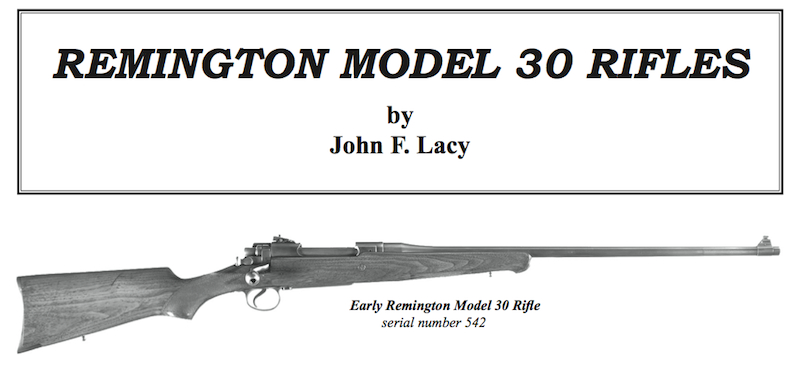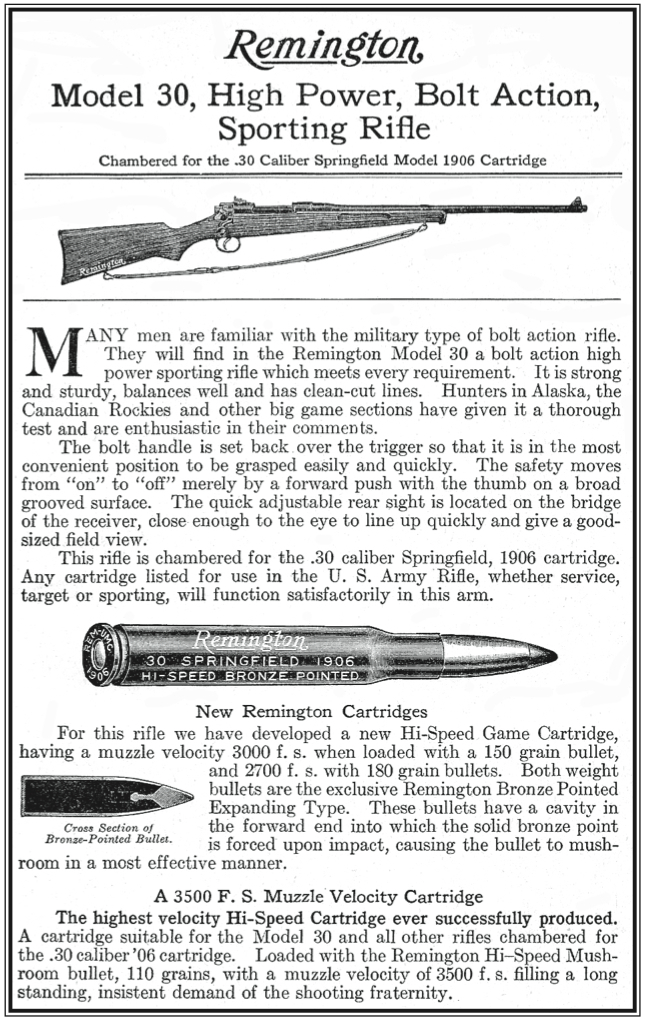An introduction online
full article in journal
Non members may purchase individual journals if available here

As my research began on the Model 30 there were a considerable number of questions to be answered. To a great extent these questions have been answered. The familiar quandary is that these answerers spawn new questions and new areas to be researched.
The Remington Model 30 is just
Traditional sources of information have been used includ- ing articles, advertisements, catalogs, owner manuals and fac- tory correspondence. The real story however, is made possible by studying the surviving rifles. An aid in this endeavor was the availability of several sizeable collections of Model 30s. The owners have graciously shared information from their collections. Surviving specimens are often a difficult read, as compared to documents, and thus are often underutilized as a research tool. Availability of such specimens is also a logistical problem as opposed to documents which are usually no more than Xerox machine away. Typically there are no more than |
in the work. As desired, the rewards of this work are worth the effort. Thanks are due to the Nordic nimrod who made his rifles and time available. Another Model 30 collector provided the considerable data he had collected on specimens he had worked with over the years. These large collections allow the chance to see features and patterns as they developed over time and to see them repeated with the large quantity of specimens to know they occurred at the factory rather than being questioned as a single example of work that was performed after it left the factory.
Among common knowledge re- garding The Model 30 is that it is a de- rivative of the 1917 Enfield rifle. Less commonly known is that design work The first known advertisement for the Model 30 did not include a model number designation. Interestingly some of the early Variety I rifles also were not marked with a model number. Another early flyer referred to the rifle as the Model 23. This flyer was provided by Winchester historian and author, Herb Houze. To date this is the only copy of this flyer known to exist. No other reference to the Model 23 has been found. Mr. Houze has proposed an interesting slant for its origin. His ideas will be discussed in some detail later in this writing. |
| Page 16 | 4th Quarter 2012 |

| On-line Search/Sort Journal Index |
On-line Journal Articles
|
